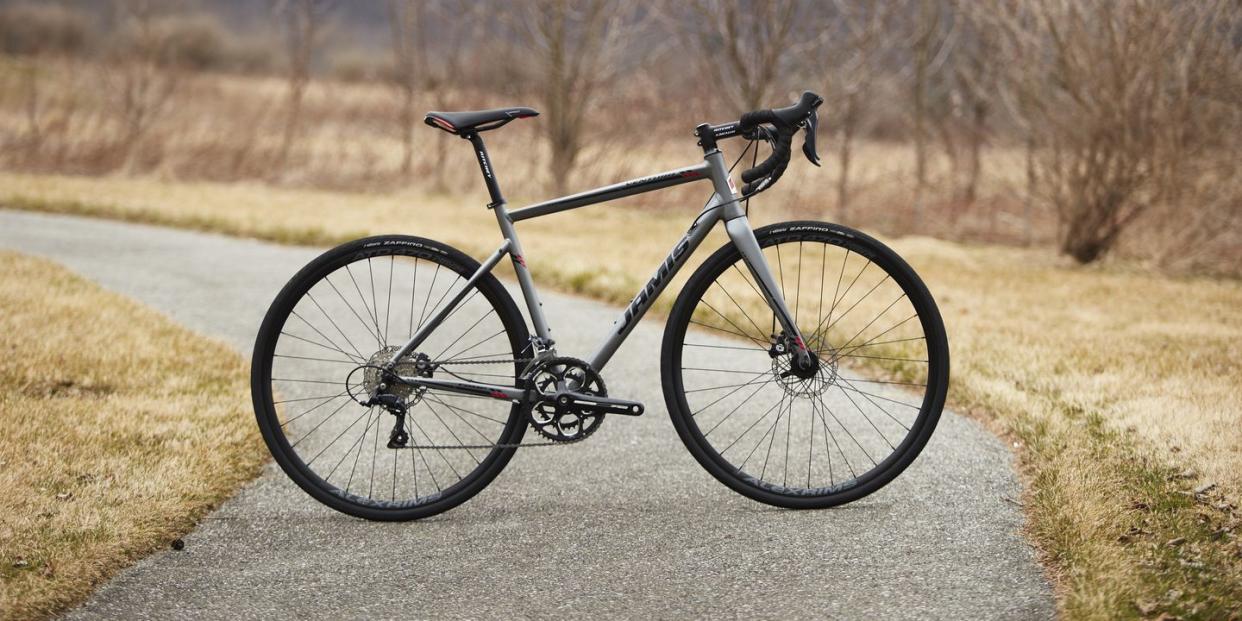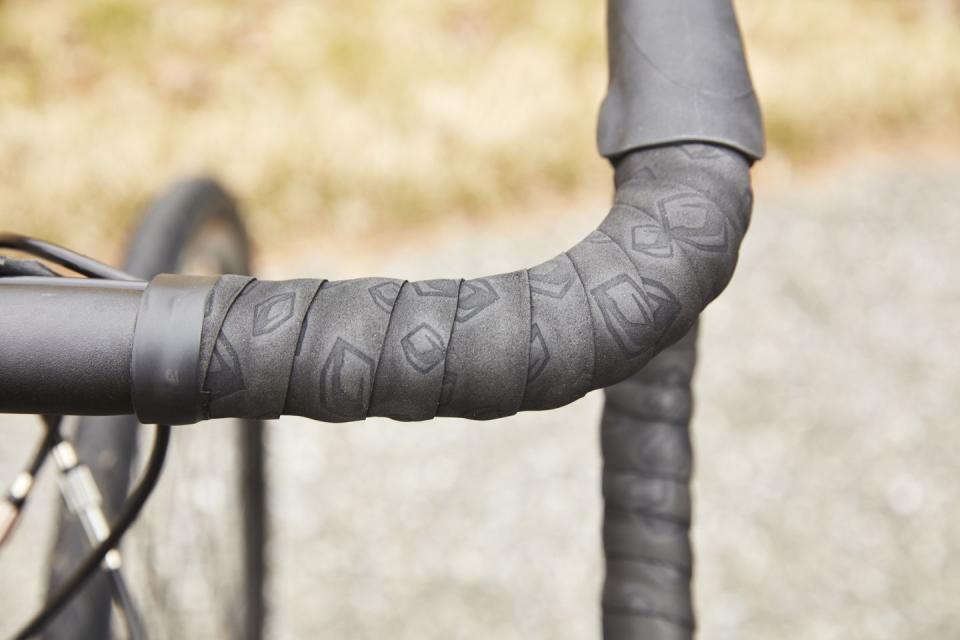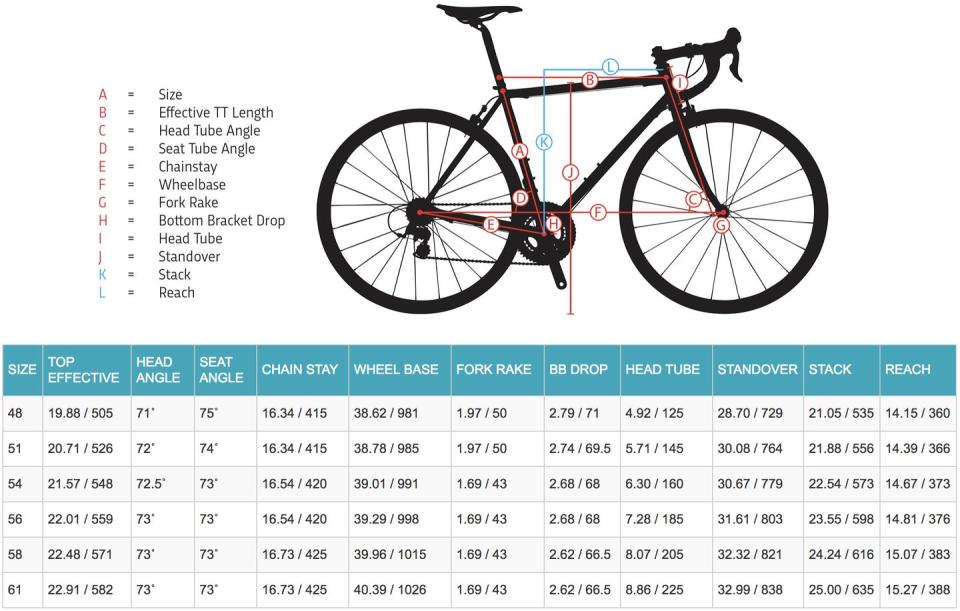The Most Kickass $1,079 Bike You Can Buy Is the Jamis Ventura Comp

The Takeaway The Ventura Comp is a great looking bike that offers a very smooth ride, well-rounded performance and good parts for the money.
Who Should Buy This - Riders looking for a comfortable bike with smooth, predictable handling.
What We Love - A really great frame with damped ride and great manners worthy of upgrades.
What We Don’t - Quick release wheels. We want to see thru axles on all disc-brake equipped bikes
Price $1,079
Weight 22.5 LB. (54cm)
Buy Now More Pictures Of This Bike
The Jamis Ventura is fast and smooth, with modern frame features and surprisingly high-end details for a bike priced just a bit over a thousand dollars. Jamis employs different tube sets—a smaller-diameter one for sizes 54cm and under and a larger-diameter set for sizes 56cm and up—to provide a smoother ride in smaller sizes and to boost frame stiffness for the cyclists who ride a larger size.
More thought than usual was put into the Ventura’s geometry—not just for a $1,079 bike but for almost any bike. The Ventura’s chainstay length, fork offset, and bottom bracket drop change across the bike’s size range. In theory, this lets the tallest and shortest riders experience the same balanced handling as the riders on midsized frames.
This geometry tinkering is what you get with custom bikes, and higher-end models like the Specialized Tarmac, but is rarely found in lower-cost bikes like this. The head tube is elegantly tapered with hidden bearing cups. And on the front of that head tube, the Ventura sports a legit head badge, an increasingly rare detail on any bike. Check out the $15,300 Argonaut—even that bike doesn’t have a head badge.
The Ventura also comes with a full-carbon fork, which Todd Corbitt, Jamis’s road product manager, says provides a better ride than an aluminum fork or a hybrid carbon-and-aluminum version. The fork steerer tapers from 1.5 inches to 1.125 inches, which improves strength and stiffness for better braking and sharper steering.

There’s a surprising number of curves and bends throughout the frame. Jamis’s factory double-butts and shapes the frame tubes, which saves weight and improves ride quality. To make maintenance easier (and your mechanic happier), Jamis added hatches at the entry and exit of the internal cable-routing ports. Individually, these details are not groundbreaking. But to find all of them in one frame is unique. And in a $1,079 bike? That’s almost unheard of.
And I’m still not done telling you about all the cool features. The Ventura also has fender and rear-rack mounts, 28mm-wide Vittoria tires, and tubeless-ready wheels so you can go with tubeless when the stock tires wear out. The Shimano Sora drivetrain shifts crisply and provides a wide gear range via the 9-speed, 11-32 cassette. The group also lets you adjust how far the shift and brake levers sit from the handlebar so you can fine-tune your reach. The Ventura’s Ritchey bar, stem, and seatpost give it a higher-end look, while the replaceable derailleur hanger and flat-mount disc brake calipers are practical features that make it easy to replace parts down the road.
Jamis Ventura Comp Details
Fork: Jamis Performance ECO, full carbon
Shift/brake levers: Shimano Sora
Front/rear derailleurs: Shimano Sora
Cranks: FSA Vero
Chainrings: FSA 50/34
Cassette: Shimano HG201, 11-32, 9-speed
Brakes: Tektro Lyra
Brake Rotors: Tektro, 160mm (front and rear)
Bottom bracket: FSA sealed cartridge, BSA threaded
Rims: Alex ATD 470, 32h
Hubs: Formula 6-bolt, QR (front and rear)
Tires: Vittoria Zaffiro, 700x28
Saddle: Selle Royal Asphalt
The only part that shows this bike’s price is the square-taper bottom bracket, which is heavier and not as stiff as modern, external-bearing BBs with large-diameter crank axles. Even so, riders won the Tour de France on bikes with square-taper BBs just 20 years ago. The Ventura also has open dropouts with quick-release wheels instead of thru-axles, and cable-actuated disc brakes instead of hydraulic brakes. Thru-axles and hydraulic discs improve a bike’s overall performance, but Jamis made a smart compromise here to keep the price low. Most users won’t have any issues with either sets of components.
Riding the Ventura makes me think about what’s essential on a bike. I also tested the most expensive bike featured in this issue—Argonaut’s fully customized, U.S.-made, carbon road bike. It is gobsmacking, one of the best bikes I’ve ever ridden, and I’ve ridden a lot (in 23 years of testing bikes, I’ve probably been on as many as anyone). It’s the kind of bike that makes me say, “Daaaaamn.” But a $15,300 bike should be—better be—all that.
Road bikes have changed a lot over the past decade: Carbon fiber is ubiquitous, electronic shifting is common, as are disc brakes, tubeless wheels, and aero frames. And while most of the highest-end bikes have all those things, not all those elements are essential to a great ride.

This Jamis offers many of the most essential pieces of bike tech that make a great ride—a great frame that responds to your input and gives the right amount of feedback from the road, a good fork, disc brakes, and attention to detail, but at a fraction of the usual price. So after all those surprises, what’s not surprising is that I had memorable rides on the Ventura Comp. It’s a damn good bike. It’s glassy smooth with balanced handling. It shifts quickly and accurately. The brakes have good power and better control. It feels reactive and quick when climbing hills. At 22.5 pounds (54cm), it’s heavy compared to a very high-end bike, but not at all heavy compared to its similarly priced competition.
With the Ventura, you get a surprising number of features for the money, and a ride that sings. You might like your bike to be something more, but you don’t need anything more than this.
You Might Also Like

